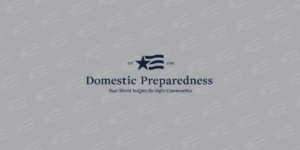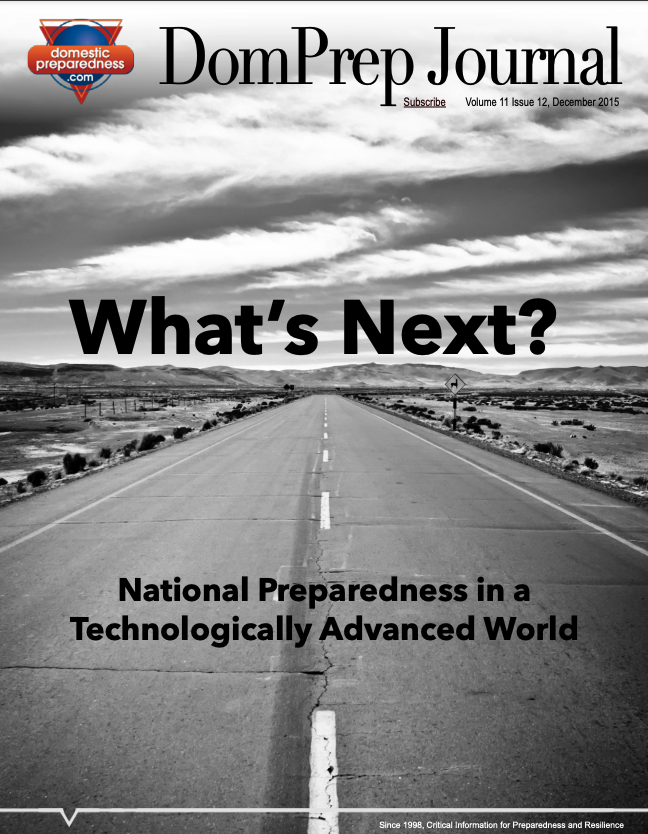
Training Programs & National Preparedness
Brandon J. Pugh
December 23, 2015
There is a positive relationship between first responder training and national preparedness. A comprehensive examination of three different models shows that training is an invaluable component of homeland security. These key findings summarize detailed analysis conducted on the links between training, response capabilities, and funding.

Overcoming Notification Systems Challenges
William (Bill) Betcher
December 23, 2015
Emergency response, information technology, and healthcare communications are three scenarios in which notification systems play a critical role. Recent disasters have demonstrated the benefits of crowdsourcing during response efforts, so notification systems are leveraging this responsiveness through two-way communication technology that can both disseminate and receive information.

The Art of Awareness for Emergency Medical Calls
Seth Komansky and Raphael Barishansky
December 23, 2015
Civilian responders have successfully acquired many skills that were originally developed by military services. Situational awareness is one such skill that would be beneficial to adapt to the civilian members of the emergency medical services. Maintaining a heightened sense of awareness would help responders stay “in the loop.”

Improving DoD Support to FEMA's All-Hazards Plans
Domestic Preparedness
December 19, 2015
This research reviews and analyzes how DoD and FEMA work together to plan and execute disaster response activities, and recommends areas for improvement. The objective of the study was to

Bioterrorism in a Technologically Advanced World
Christina M. Flowers
December 16, 2015
Recent advances in genetics, genomics, and biotechnology could have devastating implications for
bioweapons and genetically engineered diseases. As such, these developments raise the question of
whether it makes sense to pull attention away from “classic” biothreat targets, in favor of more
technologically advanced options. Immediacy and ease of use may be determining factors.

Reimagining Epidemic Communications
Renske Erion, Emily Grubert, Simon Mosbah, Michelle Munyikwa, Biswajit Paul and Christine Tran
December 16, 2015
In the first week of December 2015, professionals involved in epidemic preparedness at the national level participated in a forum convened by graduate students from Emerging Leaders in Science and Society (ELISS), a leadership development program hosted by the American Association for the Advancement of Science (AAAS), in Washington, D.C.

See Something . . . Do Something
Martin D. Masiuk
December 16, 2015
When passengers joined forces to thwart the ultimate objectives of their plane’s hijackers on 9/11, little did they know they would be inspiring change among every member of society. In

Climate Change Presents an Emerging, Dynamic Set of Hazards
Jeffrey Rubin
December 9, 2015
Despite ongoing political controversy about climate change, one leading organization released a position statement that supports scientific research on weather extremes, which are some of the visible indicators of a changing climate. Changes in weather and habitats need to be addressed to mitigate the potential negative consequences to health and critical resources.

Forging New Partnerships for Healthcare Preparedness
Jessica Wambach Brown
December 9, 2015
In the first week of December 2015, more than 1,000 professionals in healthcare-related organizations, emergency management agencies, public health departments, emergency medical services (EMS), nongovernmental organizations, and academia met in San Diego, California, to discuss ways to bolster partnerships within and between these disparate groups.

Food for Thought: Emergency Shelters & Food Allergies
Andrew R. Roszak
December 9, 2015
When one peanut has the ability to kill, it is necessary to examine the practices and procedures used in public yet confined spaces such as emergency shelters. By following simple steps, emergency managers are able to perform shelter operations while limiting exposure to allergens and contaminants that could turn a safe haven into an exposure risk.






